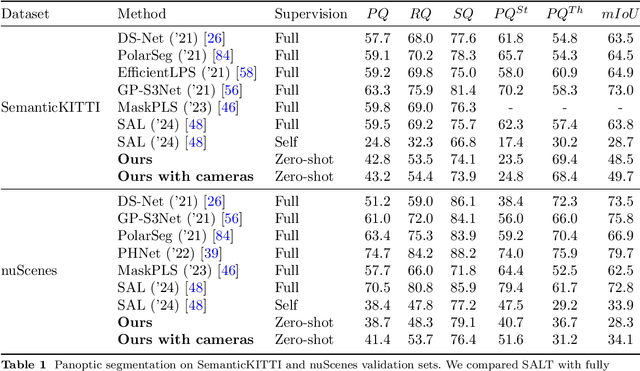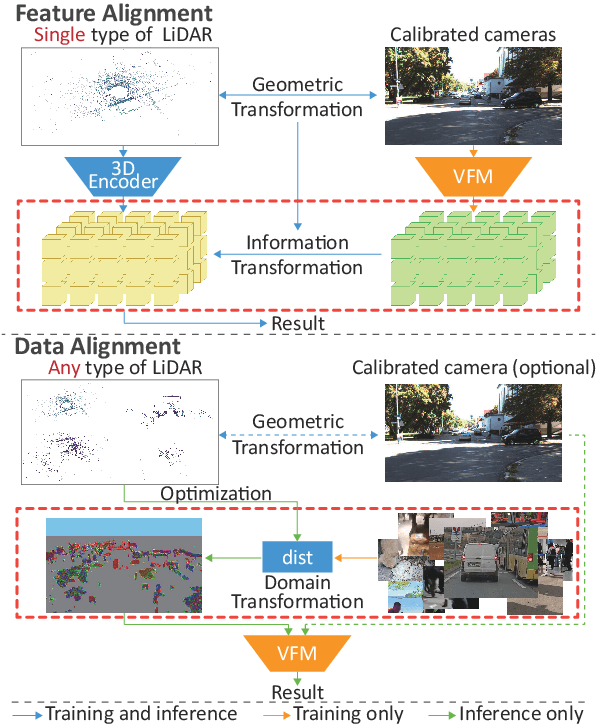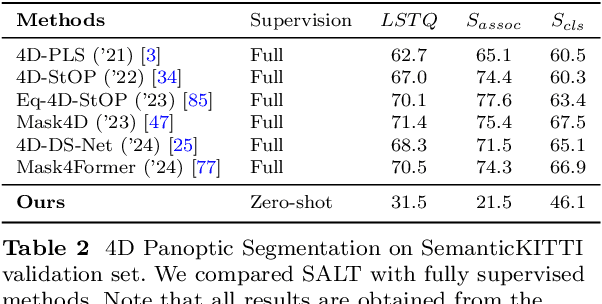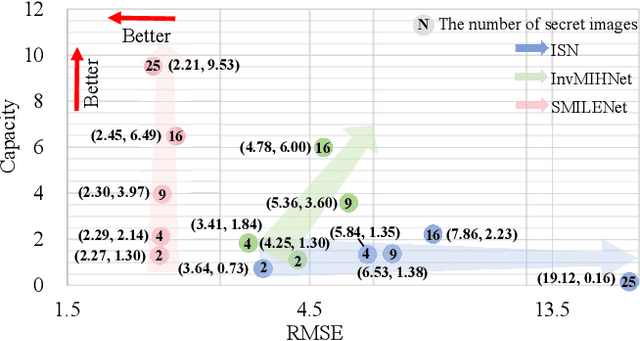Wentao Zhao
Guided Diffusion-based Generation of Adversarial Objects for Real-World Monocular Depth Estimation Attacks
Dec 30, 2025Abstract:Monocular Depth Estimation (MDE) serves as a core perception module in autonomous driving systems, but it remains highly susceptible to adversarial attacks. Errors in depth estimation may propagate through downstream decision making and influence overall traffic safety. Existing physical attacks primarily rely on texture-based patches, which impose strict placement constraints and exhibit limited realism, thereby reducing their effectiveness in complex driving environments. To overcome these limitations, this work introduces a training-free generative adversarial attack framework that generates naturalistic, scene-consistent adversarial objects via a diffusion-based conditional generation process. The framework incorporates a Salient Region Selection module that identifies regions most influential to MDE and a Jacobian Vector Product Guidance mechanism that steers adversarial gradients toward update directions supported by the pre-trained diffusion model. This formulation enables the generation of physically plausible adversarial objects capable of inducing substantial adversarial depth shifts. Extensive digital and physical experiments demonstrate that our method significantly outperforms existing attacks in effectiveness, stealthiness, and physical deployability, underscoring its strong practical implications for autonomous driving safety assessment.
RaCalNet: Radar Calibration Network for Sparse-Supervised Metric Depth Estimation
Jun 18, 2025Abstract:Dense metric depth estimation using millimeter-wave radar typically requires dense LiDAR supervision, generated via multi-frame projection and interpolation, to guide the learning of accurate depth from sparse radar measurements and RGB images. However, this paradigm is both costly and data-intensive. To address this, we propose RaCalNet, a novel framework that eliminates the need for dense supervision by using sparse LiDAR to supervise the learning of refined radar measurements, resulting in a supervision density of merely around 1% compared to dense-supervised methods. Unlike previous approaches that associate radar points with broad image regions and rely heavily on dense labels, RaCalNet first recalibrates and refines sparse radar points to construct accurate depth priors. These priors then serve as reliable anchors to guide monocular depth prediction, enabling metric-scale estimation without resorting to dense supervision. This design improves structural consistency and preserves fine details. Despite relying solely on sparse supervision, RaCalNet surpasses state-of-the-art dense-supervised methods, producing depth maps with clear object contours and fine-grained textures. Extensive experiments on the ZJU-4DRadarCam dataset and real-world deployment scenarios demonstrate its effectiveness, reducing RMSE by 35.30% and 34.89%, respectively.
UNO: Unified Self-Supervised Monocular Odometry for Platform-Agnostic Deployment
Jun 08, 2025Abstract:This work presents UNO, a unified monocular visual odometry framework that enables robust and adaptable pose estimation across diverse environments, platforms, and motion patterns. Unlike traditional methods that rely on deployment-specific tuning or predefined motion priors, our approach generalizes effectively across a wide range of real-world scenarios, including autonomous vehicles, aerial drones, mobile robots, and handheld devices. To this end, we introduce a Mixture-of-Experts strategy for local state estimation, with several specialized decoders that each handle a distinct class of ego-motion patterns. Moreover, we introduce a fully differentiable Gumbel-Softmax module that constructs a robust inter-frame correlation graph, selects the optimal expert decoder, and prunes erroneous estimates. These cues are then fed into a unified back-end that combines pre-trained, scale-independent depth priors with a lightweight bundling adjustment to enforce geometric consistency. We extensively evaluate our method on three major benchmark datasets: KITTI (outdoor/autonomous driving), EuRoC-MAV (indoor/aerial drones), and TUM-RGBD (indoor/handheld), demonstrating state-of-the-art performance.
SN-LiDAR: Semantic Neural Fields for Novel Space-time View LiDAR Synthesis
Apr 11, 2025Abstract:Recent research has begun exploring novel view synthesis (NVS) for LiDAR point clouds, aiming to generate realistic LiDAR scans from unseen viewpoints. However, most existing approaches do not reconstruct semantic labels, which are crucial for many downstream applications such as autonomous driving and robotic perception. Unlike images, which benefit from powerful segmentation models, LiDAR point clouds lack such large-scale pre-trained models, making semantic annotation time-consuming and labor-intensive. To address this challenge, we propose SN-LiDAR, a method that jointly performs accurate semantic segmentation, high-quality geometric reconstruction, and realistic LiDAR synthesis. Specifically, we employ a coarse-to-fine planar-grid feature representation to extract global features from multi-frame point clouds and leverage a CNN-based encoder to extract local semantic features from the current frame point cloud. Extensive experiments on SemanticKITTI and KITTI-360 demonstrate the superiority of SN-LiDAR in both semantic and geometric reconstruction, effectively handling dynamic objects and large-scale scenes. Codes will be available on https://github.com/dtc111111/SN-Lidar.
Vision-Language Model Predictive Control for Manipulation Planning and Trajectory Generation
Apr 07, 2025



Abstract:Model Predictive Control (MPC) is a widely adopted control paradigm that leverages predictive models to estimate future system states and optimize control inputs accordingly. However, while MPC excels in planning and control, it lacks the capability for environmental perception, leading to failures in complex and unstructured scenarios. To address this limitation, we introduce Vision-Language Model Predictive Control (VLMPC), a robotic manipulation planning framework that integrates the perception power of vision-language models (VLMs) with MPC. VLMPC utilizes a conditional action sampling module that takes a goal image or language instruction as input and leverages VLM to generate candidate action sequences. These candidates are fed into a video prediction model that simulates future frames based on the actions. In addition, we propose an enhanced variant, Traj-VLMPC, which replaces video prediction with motion trajectory generation to reduce computational complexity while maintaining accuracy. Traj-VLMPC estimates motion dynamics conditioned on the candidate actions, offering a more efficient alternative for long-horizon tasks and real-time applications. Both VLMPC and Traj-VLMPC select the optimal action sequence using a VLM-based hierarchical cost function that captures both pixel-level and knowledge-level consistency between the current observation and the task input. We demonstrate that both approaches outperform existing state-of-the-art methods on public benchmarks and achieve excellent performance in various real-world robotic manipulation tasks. Code is available at https://github.com/PPjmchen/VLMPC.
SALT: A Flexible Semi-Automatic Labeling Tool for General LiDAR Point Clouds with Cross-Scene Adaptability and 4D Consistency
Mar 31, 2025



Abstract:We propose a flexible Semi-Automatic Labeling Tool (SALT) for general LiDAR point clouds with cross-scene adaptability and 4D consistency. Unlike recent approaches that rely on camera distillation, SALT operates directly on raw LiDAR data, automatically generating pre-segmentation results. To achieve this, we propose a novel zero-shot learning paradigm, termed data alignment, which transforms LiDAR data into pseudo-images by aligning with the training distribution of vision foundation models. Additionally, we design a 4D-consistent prompting strategy and 4D non-maximum suppression module to enhance SAM2, ensuring high-quality, temporally consistent presegmentation. SALT surpasses the latest zero-shot methods by 18.4% PQ on SemanticKITTI and achieves nearly 40-50% of human annotator performance on our newly collected low-resolution LiDAR data and on combined data from three LiDAR types, significantly boosting annotation efficiency. We anticipate that SALT's open-sourcing will catalyze substantial expansion of current LiDAR datasets and lay the groundwork for the future development of LiDAR foundation models. Code is available at https://github.com/Cavendish518/SALT.
SMILENet: Unleashing Extra-Large Capacity Image Steganography via a Synergistic Mosaic InvertibLE Hiding Network
Mar 07, 2025



Abstract:Existing image steganography methods face fundamental limitations in hiding capacity (typically $1\sim7$ images) due to severe information interference and uncoordinated capacity-distortion trade-off. We propose SMILENet, a novel synergistic framework that achieves 25 image hiding through three key innovations: (i) A synergistic network architecture coordinates reversible and non-reversible operations to efficiently exploit information redundancy in both secret and cover images. The reversible Invertible Cover-Driven Mosaic (ICDM) module and Invertible Mosaic Secret Embedding (IMSE) module establish cover-guided mosaic transformations and representation embedding with mathematically guaranteed invertibility for distortion-free embedding. The non-reversible Secret Information Selection (SIS) module and Secret Detail Enhancement (SDE) module implement learnable feature modulation for critical information selection and enhancement. (ii) A unified training strategy that coordinates complementary modules to achieve 3.0x higher capacity than existing methods with superior visual quality. (iii) Last but not least, we introduce a new metric to model Capacity-Distortion Trade-off for evaluating the image steganography algorithms that jointly considers hiding capacity and distortion, and provides a unified evaluation approach for accessing results with different number of secret image. Extensive experiments on DIV2K, Paris StreetView and ImageNet1K show that SMILENet outperforms state-of-the-art methods in terms of hiding capacity, recovery quality as well as security against steganalysis methods.
SFPNet: Sparse Focal Point Network for Semantic Segmentation on General LiDAR Point Clouds
Jul 16, 2024



Abstract:Although LiDAR semantic segmentation advances rapidly, state-of-the-art methods often incorporate specifically designed inductive bias derived from benchmarks originating from mechanical spinning LiDAR. This can limit model generalizability to other kinds of LiDAR technologies and make hyperparameter tuning more complex. To tackle these issues, we propose a generalized framework to accommodate various types of LiDAR prevalent in the market by replacing window-attention with our sparse focal point modulation. Our SFPNet is capable of extracting multi-level contexts and dynamically aggregating them using a gate mechanism. By implementing a channel-wise information query, features that incorporate both local and global contexts are encoded. We also introduce a novel large-scale hybrid-solid LiDAR semantic segmentation dataset for robotic applications. SFPNet demonstrates competitive performance on conventional benchmarks derived from mechanical spinning LiDAR, while achieving state-of-the-art results on benchmark derived from solid-state LiDAR. Additionally, it outperforms existing methods on our novel dataset sourced from hybrid-solid LiDAR. Code and dataset are available at https://github.com/Cavendish518/SFPNet and https://www.semanticindustry.top.
GeoMix: Towards Geometry-Aware Data Augmentation
Jul 15, 2024Abstract:Mixup has shown considerable success in mitigating the challenges posed by limited labeled data in image classification. By synthesizing samples through the interpolation of features and labels, Mixup effectively addresses the issue of data scarcity. However, it has rarely been explored in graph learning tasks due to the irregularity and connectivity of graph data. Specifically, in node classification tasks, Mixup presents a challenge in creating connections for synthetic data. In this paper, we propose Geometric Mixup (GeoMix), a simple and interpretable Mixup approach leveraging in-place graph editing. It effectively utilizes geometry information to interpolate features and labels with those from the nearby neighborhood, generating synthetic nodes and establishing connections for them. We conduct theoretical analysis to elucidate the rationale behind employing geometry information for node Mixup, emphasizing the significance of locality enhancement-a critical aspect of our method's design. Extensive experiments demonstrate that our lightweight Geometric Mixup achieves state-of-the-art results on a wide variety of standard datasets with limited labeled data. Furthermore, it significantly improves the generalization capability of underlying GNNs across various challenging out-of-distribution generalization tasks. Our code is available at https://github.com/WtaoZhao/geomix.
VLMPC: Vision-Language Model Predictive Control for Robotic Manipulation
Jul 13, 2024Abstract:Although Model Predictive Control (MPC) can effectively predict the future states of a system and thus is widely used in robotic manipulation tasks, it does not have the capability of environmental perception, leading to the failure in some complex scenarios. To address this issue, we introduce Vision-Language Model Predictive Control (VLMPC), a robotic manipulation framework which takes advantage of the powerful perception capability of vision language model (VLM) and integrates it with MPC. Specifically, we propose a conditional action sampling module which takes as input a goal image or a language instruction and leverages VLM to sample a set of candidate action sequences. Then, a lightweight action-conditioned video prediction model is designed to generate a set of future frames conditioned on the candidate action sequences. VLMPC produces the optimal action sequence with the assistance of VLM through a hierarchical cost function that formulates both pixel-level and knowledge-level consistence between the current observation and the goal image. We demonstrate that VLMPC outperforms the state-of-the-art methods on public benchmarks. More importantly, our method showcases excellent performance in various real-world tasks of robotic manipulation. Code is available at~\url{https://github.com/PPjmchen/VLMPC}.
 Add to Chrome
Add to Chrome Add to Firefox
Add to Firefox Add to Edge
Add to Edge